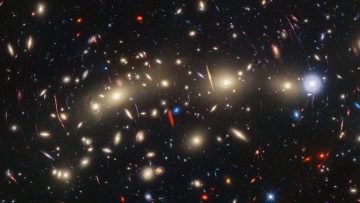Our Sun is over four billion years old. But, if you could go back in time and take a photo of it, just as it was being born and growing up, you’d see something similar to the latest James Webb photo of a baby star. The star, which is located in the Orion constellation, was captured, throwing out powerful shocks and jets of energy.
Looking at the image, which I’ve embedded below, it’s evident that the birth and subsequent growth of a star is exceptionally violent. As a result, several shockwaves and jets of energy like the ones seen in this image are common when a star is born. The particular star in question this time around is part of an object called HH212.

HH212 is located roughly 1,300 light-years from Earth, and it is actually very close to the three bright and beautiful stars that make up Orion’s Belt, an iconic constellation you can often see in the night sky. James Webb’s photo of this baby star showcases massive and dramatic outflows of gas, which scientists say are probably used to regulate the star’s birthing.
Scientists estimate the protostar to be around 50,000 years old. They also say that our Sun probably looked very similar when it was that age. The jets that we see here, which also show evidence of bowshocks, are likely used to help keep the star from spinning out of control, thus causing it to fly apart.
Unfortunately, you can’t see the protostar in James Webb’s photo of the baby star, as it is hidden behind a dense and spinning disc of gas and dust, a post beneath the image explains. But that doesn’t stop the image from being absolutely breathtaking to look at and yet another reminder of how much James Webb is changing science by giving us unique views into our universe like this.
Scientists are also using the space telescope to study the mysteries of the early universe, which it hopes to unravel as scientists seek more answers about how our universe evolved.








